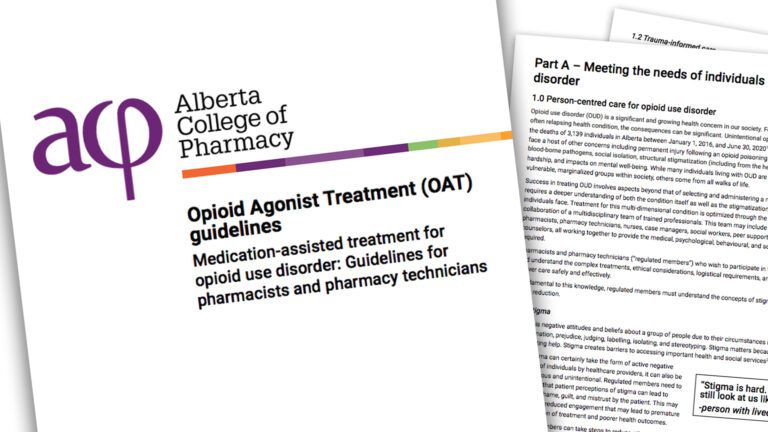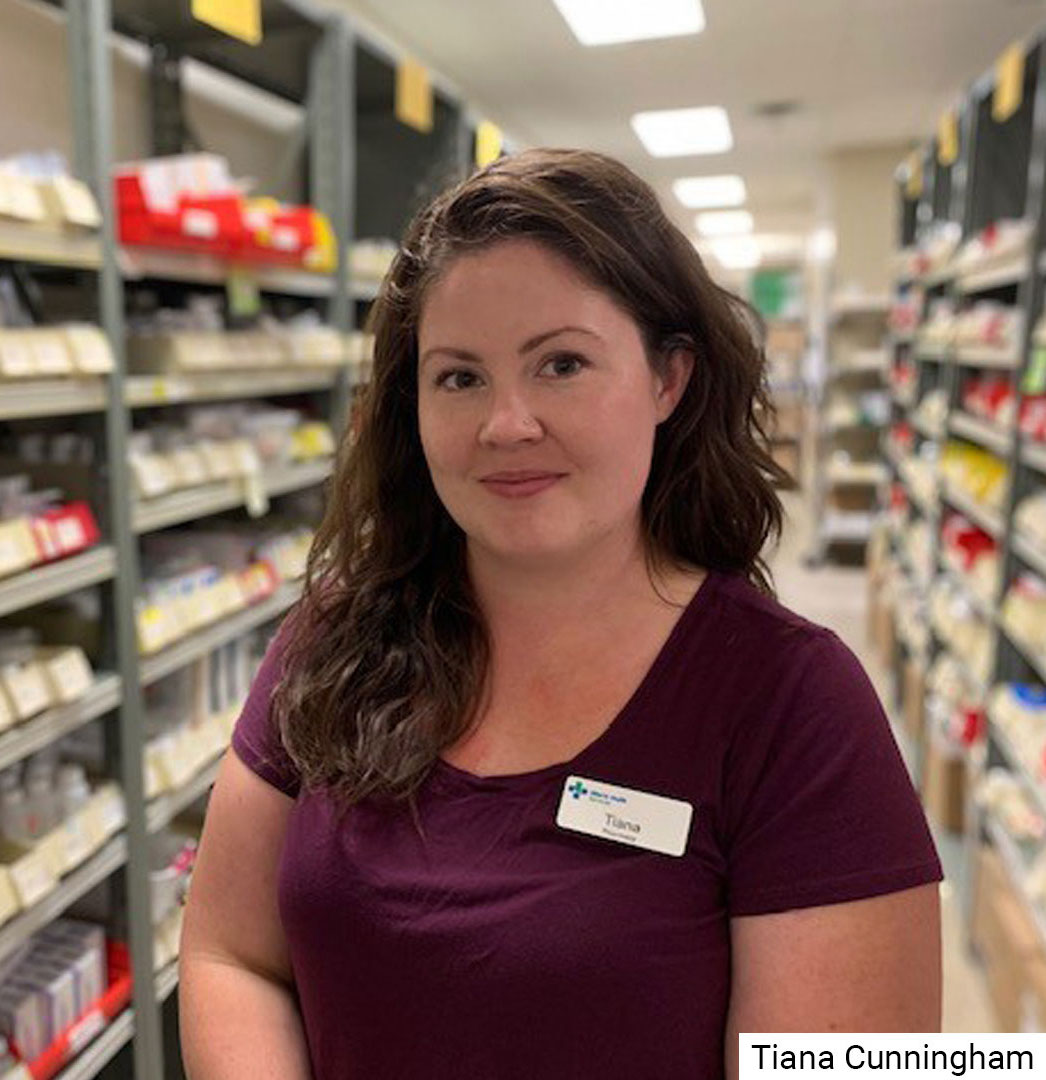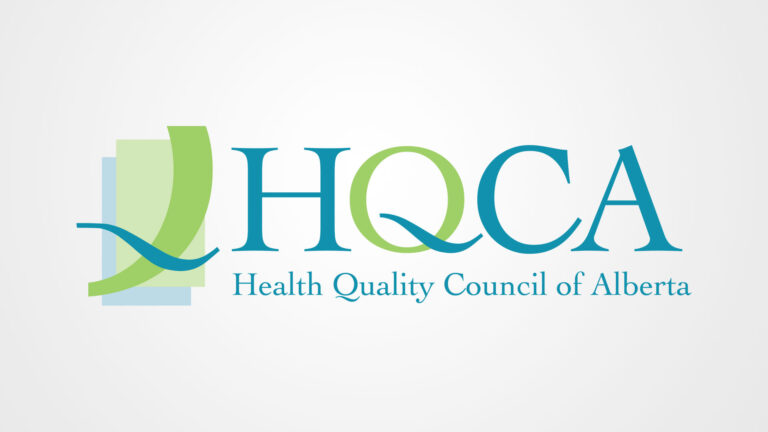
The standards referenced in the article below are out of date as of February 1, 2025. Please refer to ACP’s new standards for up-to-date information.
The opioid crisis is growing in Canada driven by both illicit and prescription opioid use. Accompanying this growth is the public health impact of opioid-related deaths, and the devastation that thousands of families will endure.
In 2020, Alberta recorded its deadliest year on record for opioid overdose deaths. That year, 1,334 deaths were linked to opioids[1]. The COVID-19 pandemic has contributed to that number. With supply chains interrupted, the purity of illicitly obtained drugs deteriorated, and because of physical distancing requirements, many people were forced to continue their substance use in isolation.
The Alberta College of Pharmacy’s (ACP) previous Medication-assisted treatment for opioid dependence: Guidelines for pharmacists and pharmacy technicians (ODT guidelines) were published in 2014. Since that time, treatment of opioid use disorder has changed dramatically, both from a clinical and a regulatory perspective. Treatment protocols have evolved for methadone and buprenorphine-naloxone, new treatment modalities have emerged including buprenorphine depot, slow-release oral morphine (SROM) and injectable opioid agonist therapy (iOAT). Additionally, unscheduled naloxone is now commonly provided as a tool to manage opioid poisoning.
To reflect the progress in these areas, ACP developed new Opioid Agonist Therapy (OAT) guidelines which came into effect on July 1, 2021. The new guidelines replace the 2014 ODT guidelines.
This edition of Full Scale introduces you to the OAT guidelines, explains what is different, indicates how to use the guidelines in conjunction with trusted clinical guidelines, and describes the person-centred approach and language. Full Scale also offers first-person accounts of the opioid crisis from people with lived experience, explores why the opioid crisis should be considered a public health crisis, and provides resources to help you further your understanding of this important health condition.
Brett Baumback is an ACP pharmacy practice consultant, and he also contributed to ACP’s new OAT guidelines.
“Because of the significant public health impact of this condition over recent years, there was a need to modernize this document,” explained Brett. “It will better support pharmacists and pharmacy technicians to provide high-quality care to what we know is a very vulnerable population.”
 Tiana Cunningham is a pharmacy technician working as the Pharmacy Operations Manager at the Chinook Regional Hospital. She also assisted with updating the guidelines based on her experience in the emergency room as a member of the health care team.
Tiana Cunningham is a pharmacy technician working as the Pharmacy Operations Manager at the Chinook Regional Hospital. She also assisted with updating the guidelines based on her experience in the emergency room as a member of the health care team.
“I think these guidelines will provide not only clearer direction on how to provide opioid agonist therapy in day-to-day practice, but also how to understand, relate to, and build relationships with patients seeking care,” said Tiana. “I feel like a large part of helping patients with opioid use disorder succeed in treatment is making sure they feel they are being supported by those they trust with their care.”
In the development of the guidelines, subject matter experts including pharmacists, pharmacy technicians, physicians, nurses, harm reduction agencies, persons with lived experience, and family members with lived experience were all consulted and provided feedback. Brett believes this input was crucial.
“This was an important piece and having their view on the document was really helpful to us,” said Brett. “Incorporating the patient and family perspective ensured that the guidelines would be practical and effective, while fostering respectful and compassionate care from pharmacy professionals.”
Tiana feels the wide range of reviewers with differing areas of expertise means the guidelines are thorough.
“I appreciated the fact that they had multiple disciplines contribute to the guidelines as there are many facets to consider when treating opioid use disorder, not just pharmaceutical therapy.”
The guidelines are separated into part A and part B. Part A focuses on person-centred care. It will help regulated members understand the concepts of stigma, trauma-informed care, and harm reduction, and develop and maintain the proper perspective when reading the guidelines and providing patient care. Incorporating these concepts into practice is integral to providing comprehensive care for individuals with substance use disorders. Part B lists the guidelines for pharmacists and pharmacy technicians providing care for patients using opioid agonist therapy.
The language used in the guidelines was also updated. For example, it was previously referred to as opioid dependence, and so the guidelines were called the Opioid Dependence Treatment guidelines. Now, it is referred to as opioid use disorder.
“Physical dependence is a known and expected effect of all opioids and does not necessarily lead to addiction,” explained Brett. “Opioid use disorder, however, encompasses a number of outcomes, including a loss of control when it comes to opioid use, or continued use despite negative outcomes. It is a more accurate diagnostic term.”
The impact of stigma on a patient’s ability to engage in treatment for a substance use disorder can be significant. Pharmacists and pharmacy technicians should be informed of how not only language, but how spaces, for example, can have a negative impact on a patient.
“Patients need to feel comfortable having conversations about their substance use with their pharmacy team,” said Brett. “The physical environment can play a crucial role in maintaining privacy and confidentiality and creating a welcoming space for those conversations.”
Pharmacy professionals will also notice that the clinical guidance was removed from the guidelines.
“Treatment approaches evolved quickly after the previous guidelines were published, and ACP recognized the need to link to up-to-date, national clinical guidance that’s available elsewhere,” said Brett. “The new OAT guidelines are focused on interpreting the standards of practice in the context of treatment of opioid use disorder and provide guidance on how to apply the standards in providing care of patients receiving OAT.”
Brett notes that the shorter document is available in PDF format and in a web version. It has been re-organized to have a more intuitive flow. Because of this he believes the guidelines will be more user friendly.
“It’s now easier to find what you’re looking for in the guidelines. This means that pharmacists and pharmacy technicians will have access to the guidance they need, when they need it, and ultimately, Albertans will benefit from that.”
[1] Alberta Substance Use Surveillance System, Alberta Health https://healthanalytics.alberta.ca/SASVisualAnalytics/?reportUri=%2Freports%2Freports%2F1bbb695d-14b1-4346-b66e-d401a40f53e6§ionIndex=0&sso_guest=true&reportViewOnly=true&reportContextBar=false&sas-welcome=false




